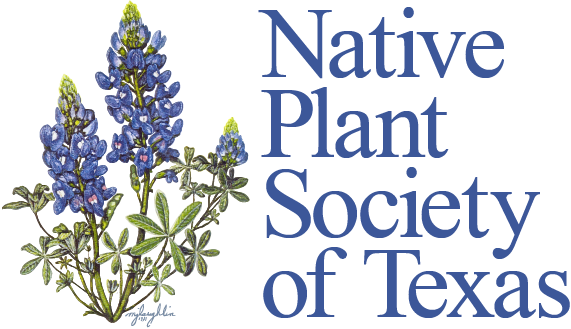By Delmar Cain
When the construction work was in full swing on I-10 near the area where the Leon Creek crosses, I enjoyed seeing the plants that would spring up and bloom in some of the construction soil, which seemed constantly in migration. None was more eye-catching than tall yellow-flowered plants that appeared to enjoy the air and dust from the persistent traffic and to accept without complaint the full sun of the summer and fall.
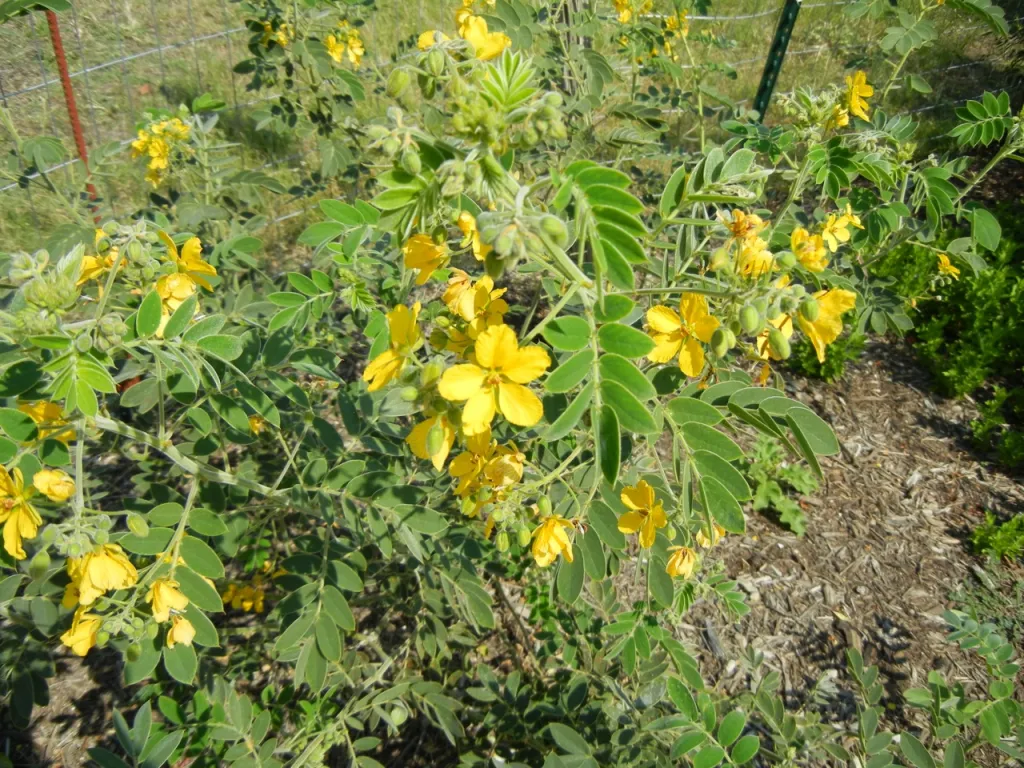
The fact that Lindheimer’s senna (Senna lindheimeriana) would grow under such conditions established for me its bona fides as a hardy Texas plant. If that were not enough, who could resist a plant that has a common name of Puppy-dog ears? Its other common names of Velvet leaf senna and Velvet-leaf wild sensitive-plant enforce the impression that there is a softness about its leaves that is appealing. But it reminds me of that old phrase of “an iron hand in a velvet glove.”
Lindheimer’s senna is a Central Texas native that also grows west into southeastern Arizona and south into parts of Mexico. It is generally found in dry rocky fields and hills where there are limestone-based soils. It grows in full sun or part shade.
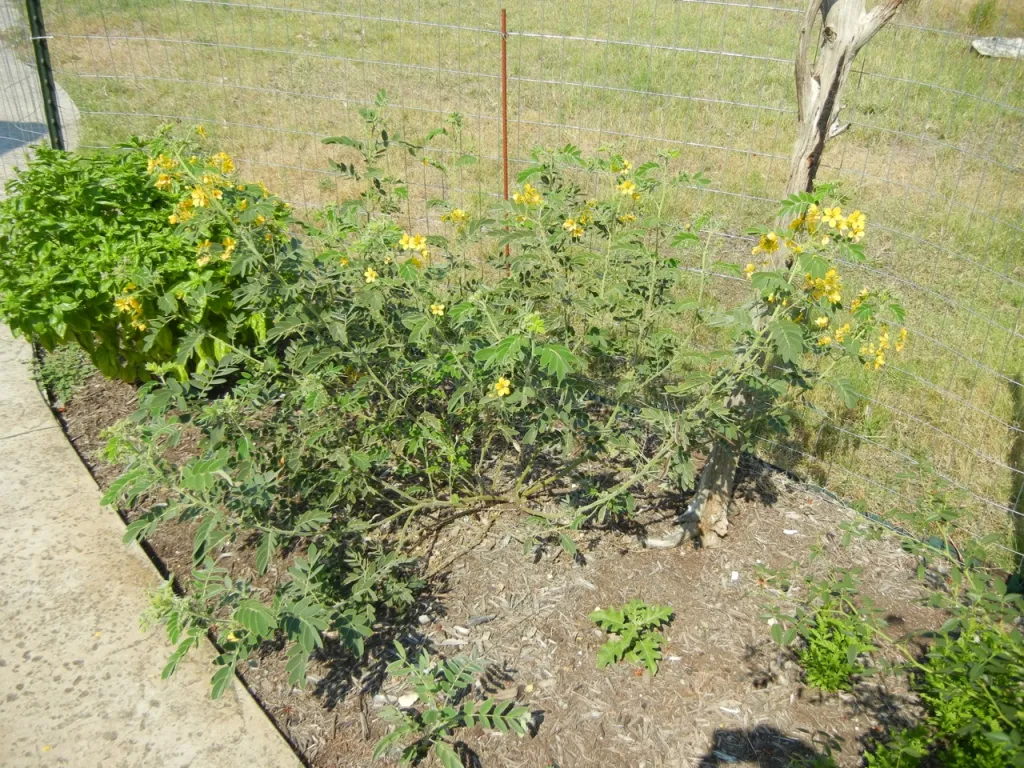
Growing to five plus feet in good conditions, this perennial shrub rises from a woody root. It may have one or several stems, which are covered with soft, velvet-like hairs. The leaves, which are 3-6 inches long, have 4 to 8 pairs of oblong leaflets, which are also covered with soft hairs.
The yellow flowers, which have 5 petals, are 1 to 1 ½ inches wide and are crinkled on the outer edges. The blooms are arranged in a cluster at the end of 4-6 inch stems that grow near the top of the main stems. The yellow of the flowers and the light green of the main stems could be an inspiration for some of the colors of the tiles in southwest interiors.
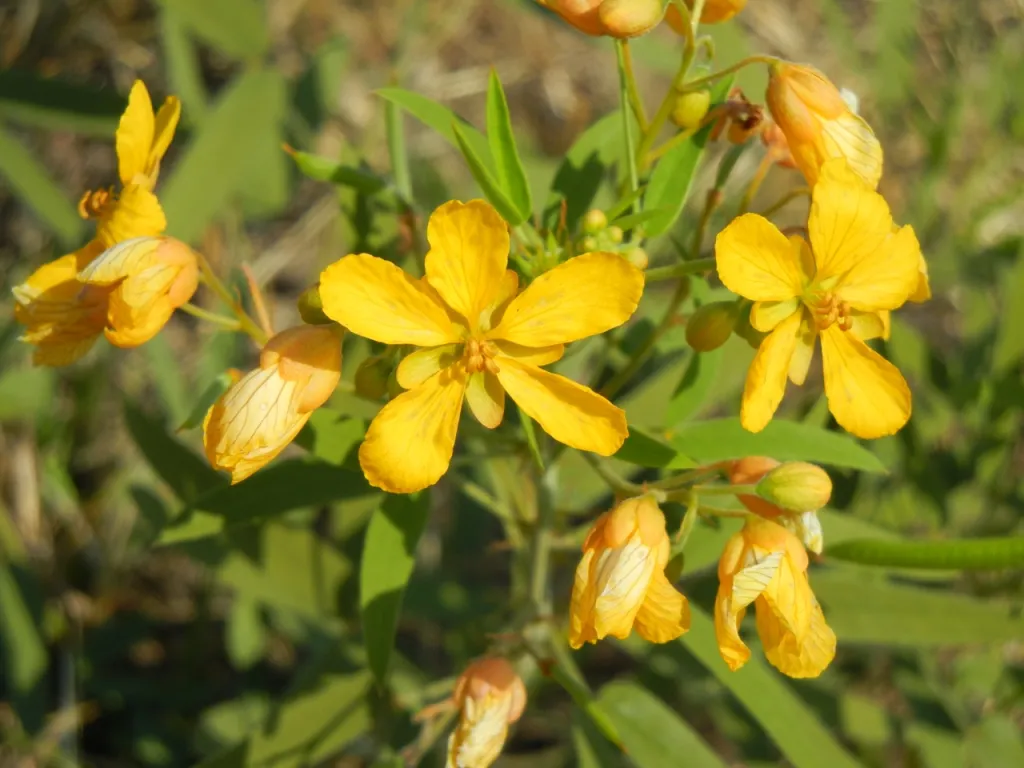
Twoleaf senna (Senna roemeriana), another Texas native, is a more compact version of Lindheimer’s senna. It grows 1-2 feet tall, has one or more erect stems and has the same showy yellow flowers. It is found not only in Texas, but also in southern Oklahoma and in New Mexico.
This smaller senna grows in open fields, open woods and hillsides, where there is well-drained limestone soils. I see it growing along the road right of ways, but seldom in groups of more than two or three plants.
Twoleaf senna differs from Lindheimer’s senna not only because of its height, but also because of its leaves. Each leaf grows on a short petiole (leaf stalk) and has two leaflets, which are 1-2 inches long.
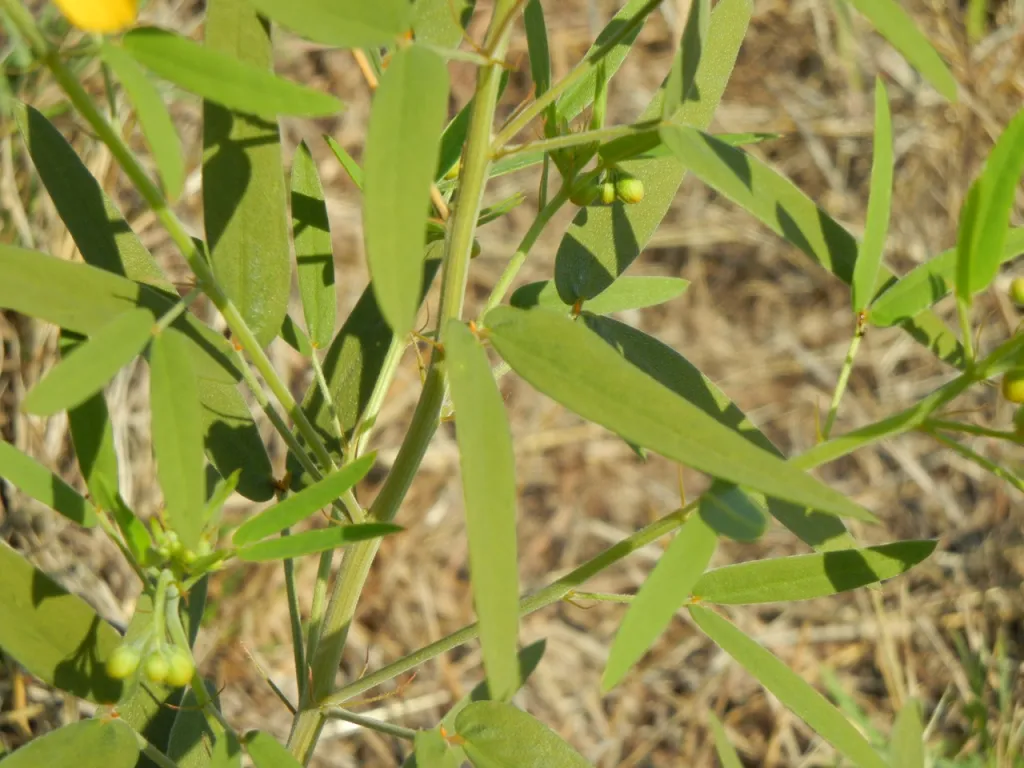
Both sennas are summer and fall bloomers. Twoleaf senna begins blooming in April and continues into October. In my neighborhood that gives it a chance to overcome its first pruning be either the deer or the county mowers and present a later show in the fall. Lindheimer’s senna blooms from August to November. It also may get the deer pruning treatment.
Lindheimer’s senna makes everyone’s Central Texas list of a recommended landscape plant. It versatility in sun or part shade, its dry nature and its beauty make it desirable. It is a host plant for the Sleepy Orange butterfly and it may be of special significance to bumble bees. Its seeds, which grow in a pod, signal that the plant is in the Pea Family. Birds and other wildlife eat the seeds.
Twoleaf senna is also a recommended landscape plant. Its ability to put forth beautiful blooms without additional water, other than rain, makes it a plant of choice. It is also a host plant for sulphur butterflies and its seeds are food source for birds.
If you don’t have these two Central Texas sennas in your yard, you can probably find them at Medina Garden Nursery in Medina. If you don’t want to plant them, at least look for them on your local travels and enjoy their beautiful blooms in the coming fall.
